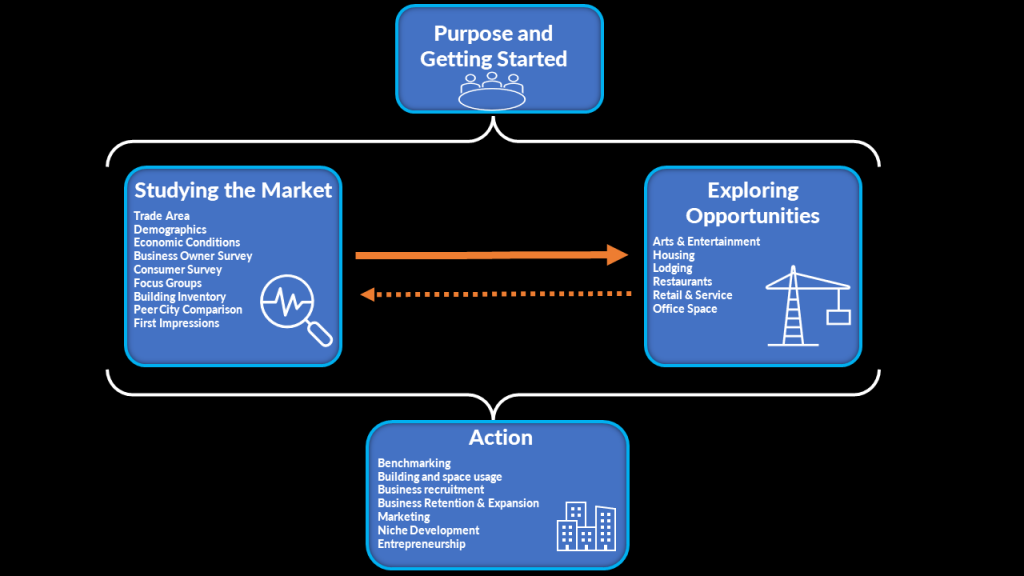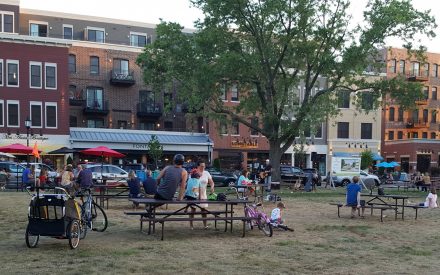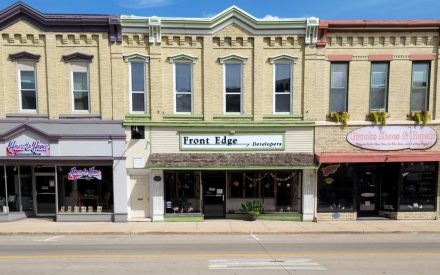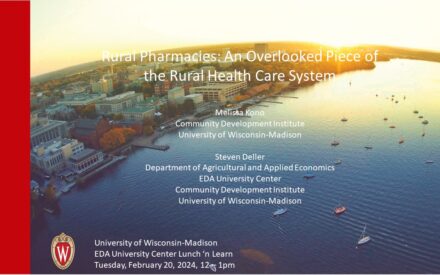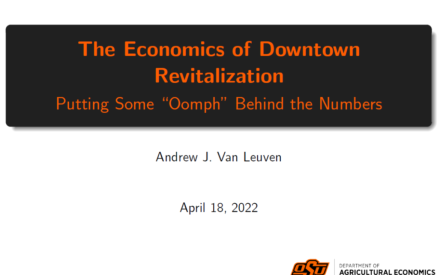Downtown Toolbox
Part I. Using the Toolbox in Your Community
Introduction
Since the early 1960s, small cities (population of less than 75,000) all across our country have seen continued economic leakage from downtown to outlying edge locations. Once the center for community and economic activity, downtowns have suffered the loss of retail and other businesses. Downtowns continue to suffer economic hardship brought on by fierce retail competition from category killers, large discount stores, regional shopping centers, warehouse clubs, and online shopping. Many small city downtowns face high vacancy rates and a poor mix of tenants.
Market studies are typically conducted in downtown districts for a number of reasons. Examples include:
- To help businesses understand their trade area to improve their capture of sales;
- To explore new business development opportunities;
- To demonstrate the economic importance of downtown; and
- To understand the changing market and reverse inequities.
This market analysis toolbox is designed to help local business leaders, entrepreneurs, developers, and economic development professionals across the country understand the changing marketplace and identify business and real estate development opportunities that are realistic and make sense for their communities. It will introduce and guide the user through many of the techniques used in analyzing specific development opportunities for a downtown area. The toolbox is intended to be a self-help resource that can be used in a locally initiated market analysis.
However, downtown market analysis today should differ from retail and shopping center market analysis. Instead of focusing strictly on retail, new emphasis is placed on the particular strength of downtown, its assets, history, and quirkiness. Traditional retail is part of the equation, but only part of it. Some of the new additions to this toolbox build on factors that are unique to downtown – things that tell a compelling story about the advantages of doing business downtown. Accordingly, Downtown has central social district. It has become increasingly important as it contributes to the reasons why people are downtown.
Using the Toolbox
This toolbox can be used on an as needed basis, addressing specific issues facing your downtown, or as a comprehensive market study that would lead into a strategic plan for downtown. Outcomes from this work include a better understanding of your trade area and your business’ ability to capture sales, to explore new business development opportunities, and demonstrate the economic impact of downtown.
This toolbox can be especially valuable to community served by a local university extension educator focuses in community economic development. The University assisted approach differs from the “outside expert” approach in which answers are often delivered to the community without full community involvement. One is not better than the other, but the community should be aware what public involvement will look like as a study moves along.
At the same time, many private sector consultants bring tremendous depth in many areas of market analysis, real estate, retail or housing. Many of the models included in this toolbox may not be sophisticated enough to match the needs of the community. This is especially true in sectors like housing, retail and office space where sector specific data analysis may be only available through networks and confidential and proprietary data owned by the firm.
Market Analysis Process
The most important initial task is arranging a study group committed to their downtown and community. They should bring various talents to the market analysis including research, geographic information systems, experience in one or more of the sectors discussed, writing, and facilitating group projects. A typical study group will spend 6 to 8 months working together, meeting biweekly.
The market analysis process presented in this workbook compartmentalizes the work so that a community can focus on the sectors most applicable to their needs. Each section of this toolbox is designed to provide the community with analytical techniques that can be put to work immediately in economic revitalization efforts. The process requires input from local residents so that the recommendations reflect both market conditions as well as the preferences of the community. The toolbox’s sections are divided into three major parts as follows:
Part II: Understanding Your Community’s Market
This part provides a series of tools necessary to develop a broad and basic overview of the competitive environment. It provides the necessary foundation to provide a more in-depth analysis of different business and real estate sectors. Tools include:
- Trade Area Analysis
- Demographics & Lifestyle Analysis
- Local & Regional Economic Analysis
- Business Owners Survey
- Consumer Survey
- Focus Groups
- Peer Community Comparison
Part III: Evaluating Opportunities in Your Community
This part goes beyond typical market studies by providing tools to analyze specific business and real estate development opportunities raised in Part I. The purpose of this section is to provide the user with advanced tools that can be used as part of a market analysis or on an as-needed basis. Tools include methods for analyzing opportunities in:
- Arts & Entertainment
- Housing
- Lodging
- Restaurants
- Retail & Service
- Office Space
Part IV: Putting Your Research to Work
This part helps the user develop conclusions and recommendations that are realistic in today’s marketplace. The intent is to look “outside of the box” to identify realistic solutions that could revitalize downtown. Tools include ways to apply market analysis data in:
- Benchmarking Categories
- Building & Space Usage
- Business Recruitment
- Business Retention & Expansion
- Marketing, Image, & Branding
- Niche Development
- Supporting Entrepreneurship
This market analysis toolbox and its compartmentalized tools take advantage of the wealth of market data and technology available today to extend our understanding of market opportunities. Both readily available public and private data (secondary data) and information collected locally through surveys and other research (primary data) are combined to fuel the market analysis with only the most relevant information. The use of various database software products, including geographic information systems, greatly enhances the analysis and provide new insight.
About the Toolbox and this Section
The 2022 update of the toolbox marks over two decades of change in our small city downtowns. It is designed to be a resource to help communities work with their Extension educator, consultant, or on their own to collect data, evaluate opportunities, and develop strategies to become a stronger economic and social center. It is a teaching tool to help build local capacity to make more informed decisions.
This free online resource has been developed and updated by over 100 university educators and graduate students from the University of Wisconsin – Madison, Division of Extension, the University of Minnesota Extension, the Ohio State University Extension, and Michigan State University – Extension. Other downtown and community development professionals have also contributed to its content.
The toolbox is aligned with the principles of the National Main Street Center. The Wisconsin Main Street Program was a key partner in the development of the initial release of the toolbox. One of the purposes of the toolbox has been to expand the examination of downtowns by involving university educators and researchers from a broad variety of perspectives.
The current contributors to each section are identified by name and email at the beginning of each section. For more information or to discuss a particular topic, contact us.


